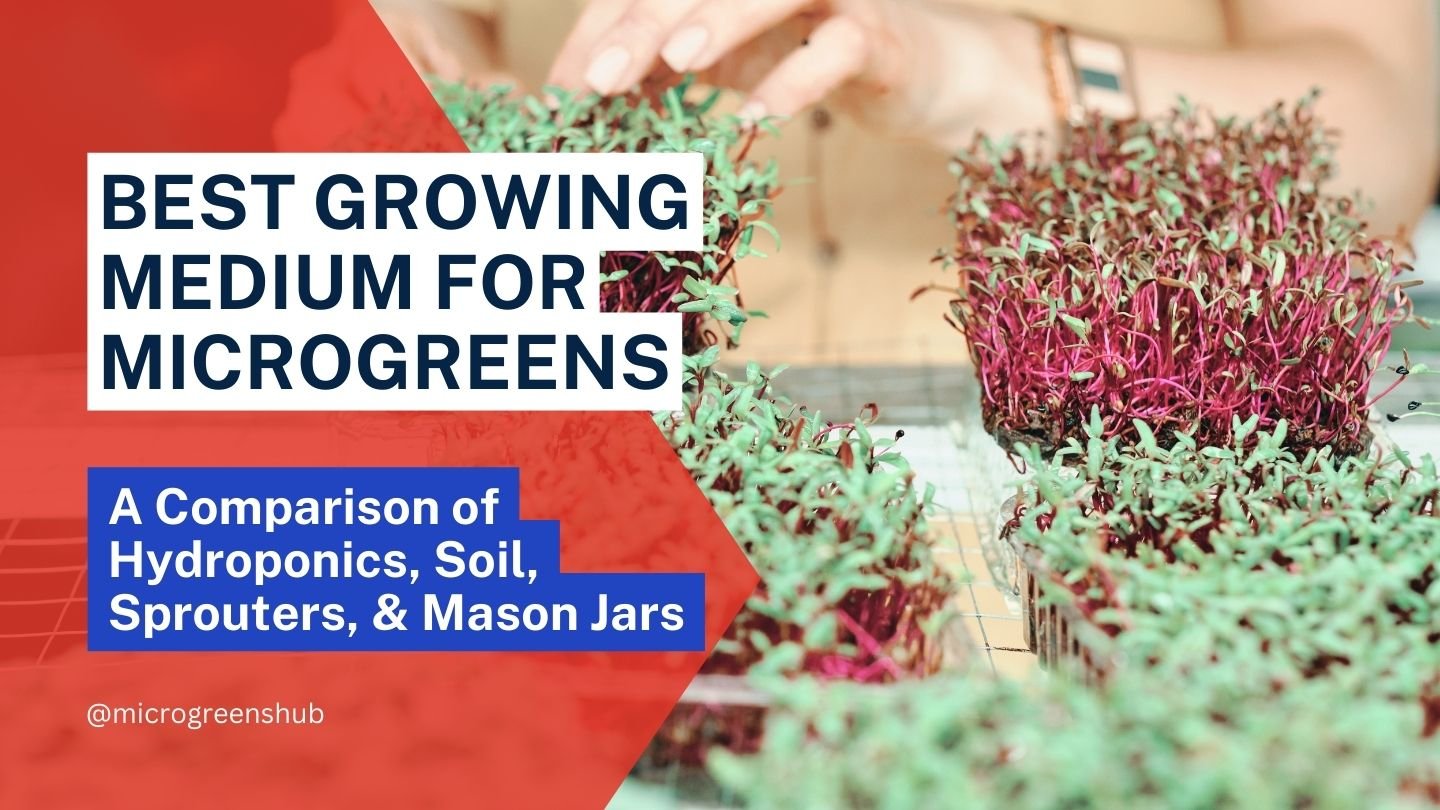
Growing Microgreens Indoor vs Outdoor – To grow microgreens, you have to keep the new seedlings safe from the harsh environment. Like sprouts, microgreens are delicate and can be hurt by anything from pests to bad weather. So, it seems like it would be better to grow microgreens inside or in a greenhouse, for obvious reasons.
Read Here: Microgreens vs Sprouts: What’s the difference?
If you don’t have enough space or money to build the infrastructure for a microgreens farming business, you can grow them in your backyard, balcony, porch, or even an empty room in your apartment. This is fine. Trust me, that can help you make some extra money.
But before you put your microgreens outdoor, there are some things you should know.
Growing Microgreens Indoor vs Outdoor
Artificial Light vs Direct Sunlight – Which is Better?
First of all, it’s important to keep in mind that you shouldn’t start growing microgreens outdoor where they will get direct sunlight. In fact, all a seed needs to grow is water and not light. When they are growing slowly into little seedlings, a little bit of shaded light is all they need.
Read Here: The Ultimate Guide to Choosing the Best Lights for Growing Microgreens
Maximizing Microgreens Yield: Understanding the Impact of Blackout Time in Indoor vs Outdoor Farming
You can grow microgreens outdoor in the field just like you would plant vegetables. They will, however, usually grow a little slower than expected. To be more specific, they will need a few more days to grow. It is less likely that the microgreens will grow well if they are planted outdoor. Because of this, microgreens will quickly turn green and look shorter and thicker.
When it comes to taste, microgreens grown outside won’t be as tender and juicy as those grown indoors.
The Role of Weather Control in Growing Microgreens Indoor vs Outdoor
If you plant microgreens outside in a greenhouse, it will be just like planting them inside. The only difference will be the light source, which will likely be natural sunlight. It’s free because you’re letting the sun be the light source. Still, you can’t control how much light and weather there is in order to get consistent growth.
When it comes to indoor farming, the light source is good because it keeps the rate of growth steady. When they are ready to be picked, the microgreens will be standing straight up in one direction, making them easier to pick.
Microgreens Farming: Pest Prevention Indoors and Outdoors
Most pests don’t bother microgreens that are kept indoors. When you grow microgreens outdoor, they will be easy prey for many animals that eat them, like caterpillars, bugs, worms, flies, and ants.
We don’t use pesticides very often, but will you use them on microgreens?
For that, you can build a mini greenhouse like this one I found on Amazon, which will protect your plants for less than $100. You can also set up netting or all-purpose garden fabric to keep the predators away.
Microgreens Soil Matters: Indoor vs Outdoor Growing Medium Comparison
My microgreens took 2–3 days longer to grow outside in the garden soil than in the potting mix.
It’s important that the soil in your garden is soft and crumbly, not like clay. Some hard soils can make it hard for water to drain away.
If that’s the case, you can mix some peat moss or coco-coir into the soil in your garden. After that, mix and break up the soil, and then use a hardboard to level it. After that, the soil is ready for the seeds.
Read Here: Discover the Optimal Soil Recipe for Growing Microgreens: Tips and Tricks
Microgreens Growing: Temperature and Humidity Impact Indoor vs Outdoor
Most common microgreens grow best at room temperature (70 to 80 degrees Fahrenheit) and humidity between 50 and 60%. Since these things can change from place to place, you might want to get a dehumidifier and an air conditioner to make the environment more stable if.
External factors can be a big problem for people who grow plants outside.
Read here: How to grow each of the 100 different kinds of microgreens
Conclusion – Is it a good idea to grow microgreens outdoors?
Microgreens should be grown indoors because of how they grow and what they need to do to grow well. As growing microgreens outside will make them shorter, less juicy, take longer to grow, and they won’t get enough time in the dark.

